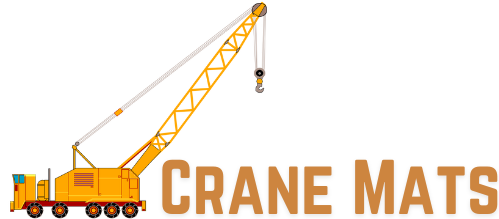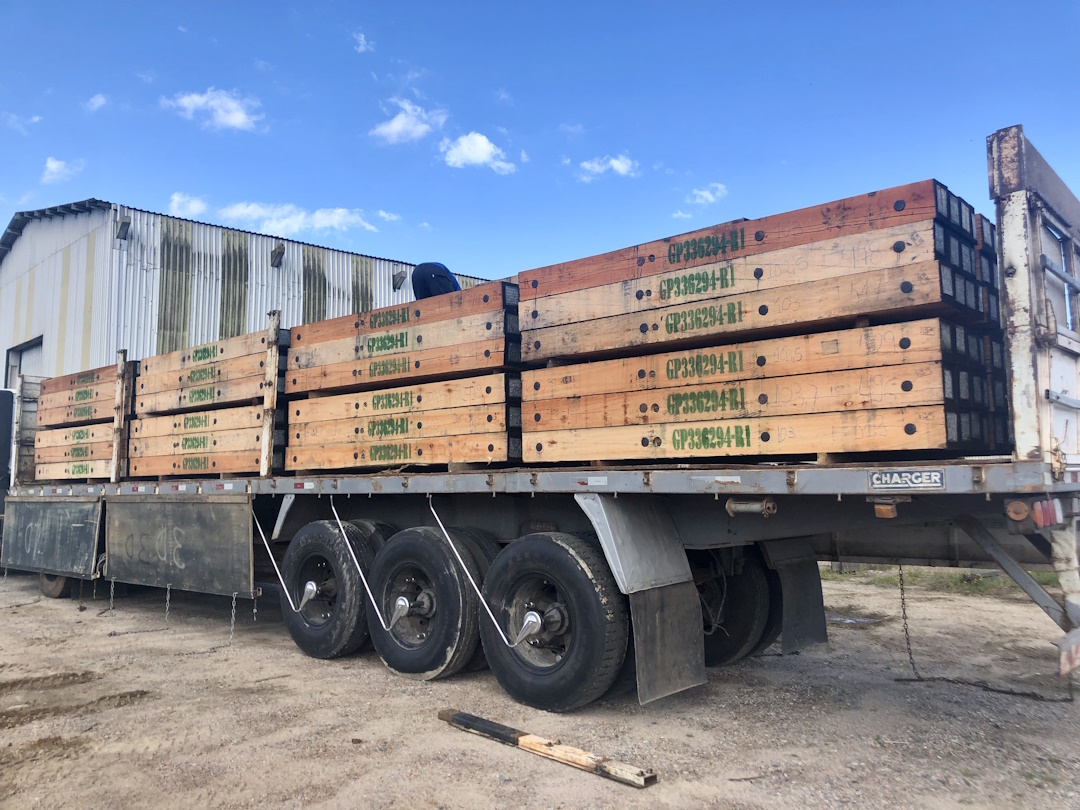Heavy machinery and tough job sites demand a solid foundation, and that’s where crane mats come in. These powerhouse mats keep equipment stable, protect the ground, and handle extreme weight in industries like construction and oil and gas.
But here’s the catch: without proper care, they can wear out fast, leading to costly replacements and potential safety hazards. In fact, well-maintained crane mats can last five years or more, while neglected ones might break down in just a few months.
The best part? Regular maintenance will end up saving you thousands of dollars and keeping worksites safer. Here’s how to make your crane mats last longer in the best state.
Choose the Right Crane Mats to Use
Proper maintenance starts with selecting the right crane mats for the job. Using mats that aren’t suited for your specific project can lead to premature wear, safety risks, and higher replacement costs. These are factors to consider:
- Material: The type of wood used in crane mats significantly impacts durability and performance. Eucalyptus crane mats are a top choice due to their exceptional strength, longer lifespan, and resistance to harsh conditions. Compared to traditional hardwood options, they offer superior load-bearing capacity and can last up to 100% longer if well taken care of.
- Load Capacity: Each crane mat can only handle a specific weight limit. Exceeding this capacity can cause mats to crack, split, or become unstable, putting workers and equipment at risk. Always verify that the mats you select can support the combined weight of machinery, loads, and dynamic forces at your job site.
- Environmental Conditions: Different materials perform better in different terrains. If your project involves wet, muddy, or uneven ground, you need mats with high moisture resistance and strong grip. In drier, rockier terrains, opt for mats that can withstand abrasion and heavy impact.
Proper Installation and Usage
Even the best crane mats won’t last long with wrong use and installation. Improper handling can lead to cracks, warping, and structural failure, cutting their lifespan short and creating safety risks on the job site. To maximize durability and performance, follow these best practices:
- Level Ground Preparation: Always place crane mats on a stable, even surface. Uneven or soft ground creates pressure points, increasing the risk of cracks, splits, or sinking under heavy loads. In muddy conditions, consider using additional support, such as gravel or geotextiles, to improve stability.
- Even Weight Distribution: Position mats strategically to spread weight evenly. Uneven distribution can cause excessive wear in certain areas, leading to premature failure. If your equipment shifts frequently, ensure mats are correctly aligned to maintain load balance.
- Avoid Dragging or Flipping: Dragging or flipping mats with machinery can cause splintering, gouging, and weakened structural integrity. Instead, always use proper lifting tools, such as spreader bars, lifting chains, or grapple attachments, to move mats without causing unnecessary damage.
- Rotate Mats Regularly: Just like rotating tires on a vehicle, periodically switching the position of crane mats evenly distributes wear and tear. You are probably doing this anyway. Consider turning the most used side downward for the next placement. This practice helps prevent excessive deterioration in high-use areas, extending the mats’ lifespan significantly.
Routine Inspection and Monitoring
Scheduled inspections help keep small issues from turning into lethal ones. Crane mats endure extreme weight, harsh weather, and constant movement, so wear and tear is inevitable, but early detection can prevent sudden failures and extend their lifespan. Here’s what to check:
- Visual Checks: Inspect mats before and after each use for visible damage. Look for cracks, splinters, deep gouges, or excessive wear, especially around the edges and load-bearing areas, where stress is highest. Small cracks can quickly spread, so addressing them early is crucial.
- Structural Integrity: Check for warping, bending, or sagging, signs that a mat is weakening under pressure. A slightly warped mat may still be usable with proper repositioning, but severe bending indicates it’s nearing the end of its lifespan and should be replaced.
- Fastener and Connection Points: If your mats are bolted together or connected, ensure that all hardware is secure and free from rust, corrosion, or loosening. Weak connections can compromise stability, creating a safety risk for workers and equipment.
Cleaning and Preventative Maintenance
Crane mats are constantly exposed to mud, debris, moisture, and even chemicals, all of which can weaken their structure over time. Regular cleaning and preventative maintenance help preserve their durability and extend their lifespan. Follow these essential steps:
- Remove Mud and Debris: After each use, clean off dirt, rocks, and construction debris to prevent buildup. Excess mud traps moisture, which can lead to rot, mold, and wood degradation, especially in humid environments.
- Allow Proper Drying: Always store mats in a dry, well-ventilated area. Wet or damp storage conditions promote water absorption and fungal growth, which can significantly weaken the wood over time. If mats get soaked, allow them to air-dry before stacking.
- Sticker Mats: If possible put stickers in between each mats or each layer of five mats to speed drying.
Safe Storage Practices
Proper storage is on the same scale of necessity when it comes to prolonging the lifespan of a crane mat. Improper storage can cause warping, cracking, and faster degradation, even when mats are not in use. Here’s how to store them correctly:
- Elevate Off the Ground: Always place mats on dunnage, blocks, or racks to keep them off wet surfaces. Direct earth contact makes it to absorb moisture, grow mold, and rot prematurely.
- Stack Mats Evenly: Avoid stacking too high or placing mats unevenly, as this can lead to warping, cracking, or instability. Keep stacks organized and level to maintain their shape and strength. Also, follow the OSHA regulations for stacking.
- Cover When Not in Use: If mats will be stored for an extended period, use tarps or covers to guard them from rain, snow, and prolonged UV exposure. Sun damage can cause drying, splitting, and loss of structural integrity.
Repair and Repurpose When Possible
Instead of immediately discarding damaged mats, consider repairing or repurposing them.
- Minor Repairs: Cracks and splits can sometimes be fixed using epoxy or reinforcing techniques.
- Trim and Reuse: If a section is beyond repair, cutting it down for smaller applications can extend usability.
- Repurpose for Other Uses: Heavily worn mats can be repurposed as walkways, barriers, or stabilizers for lighter loads.
- Recycle: There are now regional vendors who will recycle all or parts of mats. These companies often chip the wood, remove the bolts, and provide mulch or similar products as their saleable output. It will cost you transport and a fee, so it’s not cheap. But, it can be an effective tool depending on location.
Work with a Reliable Supplier
Sourcing high-quality crane mats from a trusted supplier like CraneMats.co can make a significant difference in lifespan and performance. Look for suppliers that offer:
- Durable Materials: Longer-lasting options such as Eucalyptus crane mats.
- Customization: Mats tailored to specific load requirements.
- Support and Guidance: Advice on the best mats for your needs and tips on maintenance.
Conclusion
Crane mats do more than just support heavy equipment; they protect your job site, enhance safety, and improve efficiency. But like any valuable asset, you need to give it suitable care for optimal performance. With proper selection, installation, routine inspections, cleaning, and smart storage, you can significantly extend their lifespan and reduce costly replacements.
Think of crane mat maintenance as an investment in smoother operations, fewer delays, and long-term savings. Plus, when you source your mats from a reputable supplier, you’re starting with the best foundation for durability and reliability. Take care of your crane mats, and they’ll take care of your worksite, job after job, year after year.


